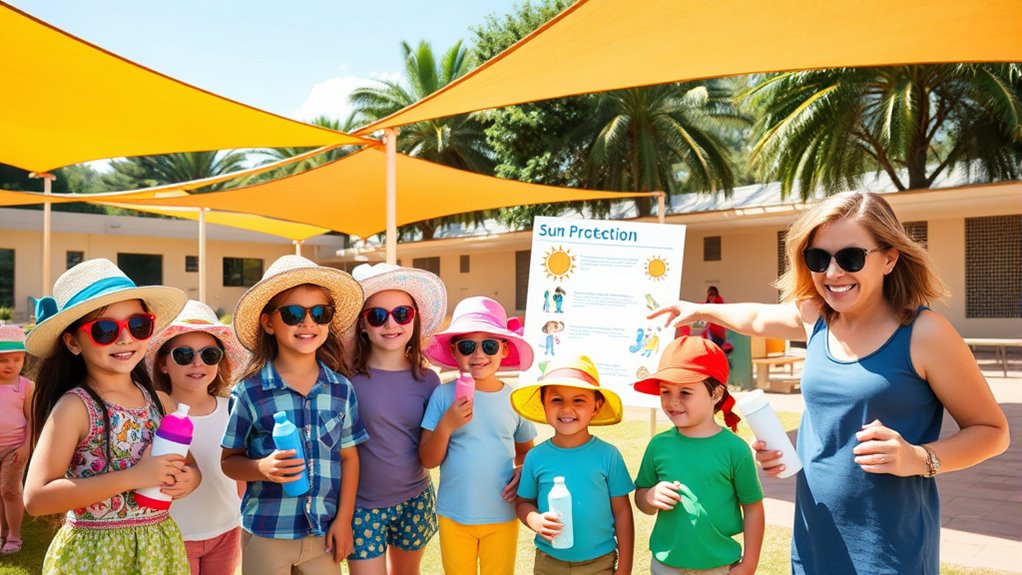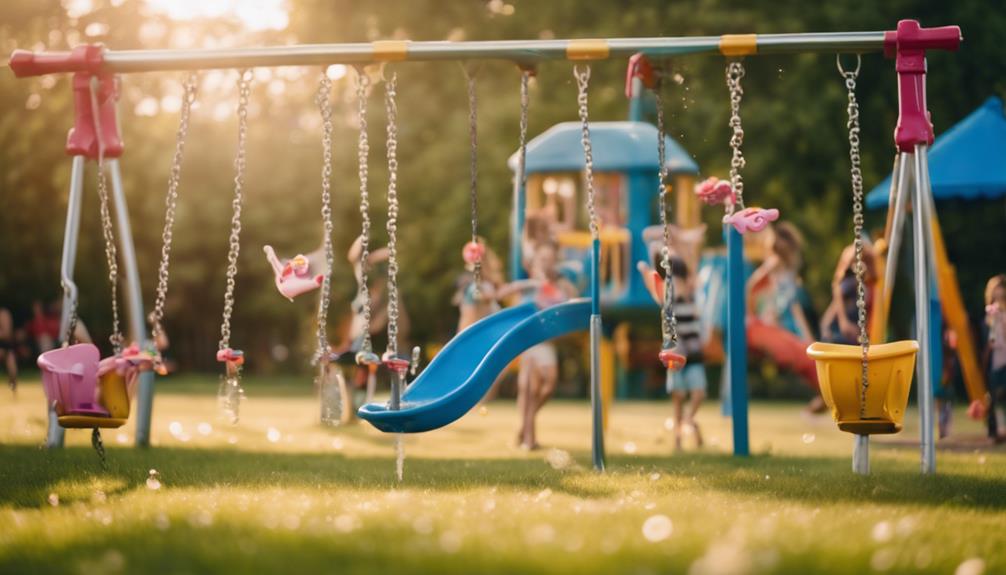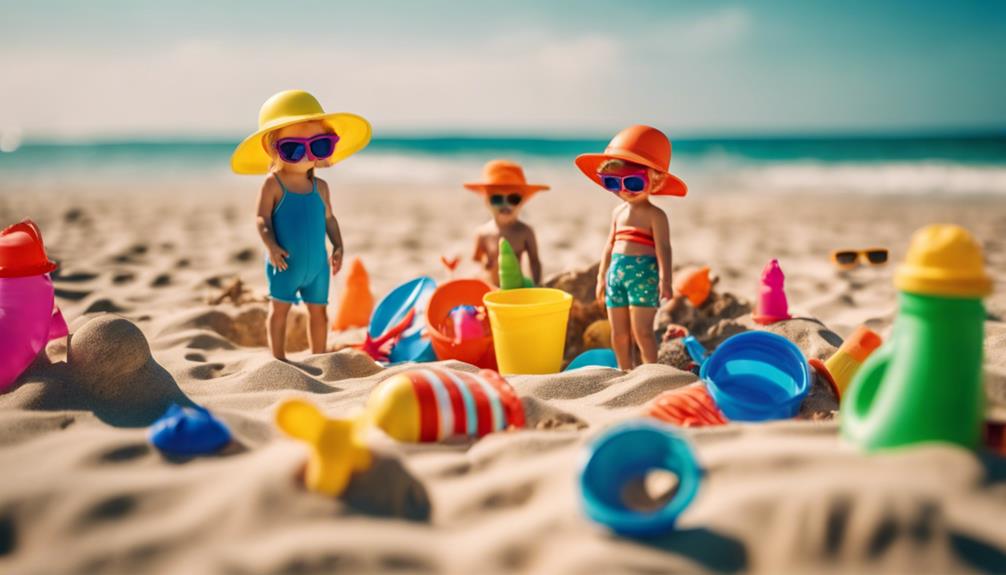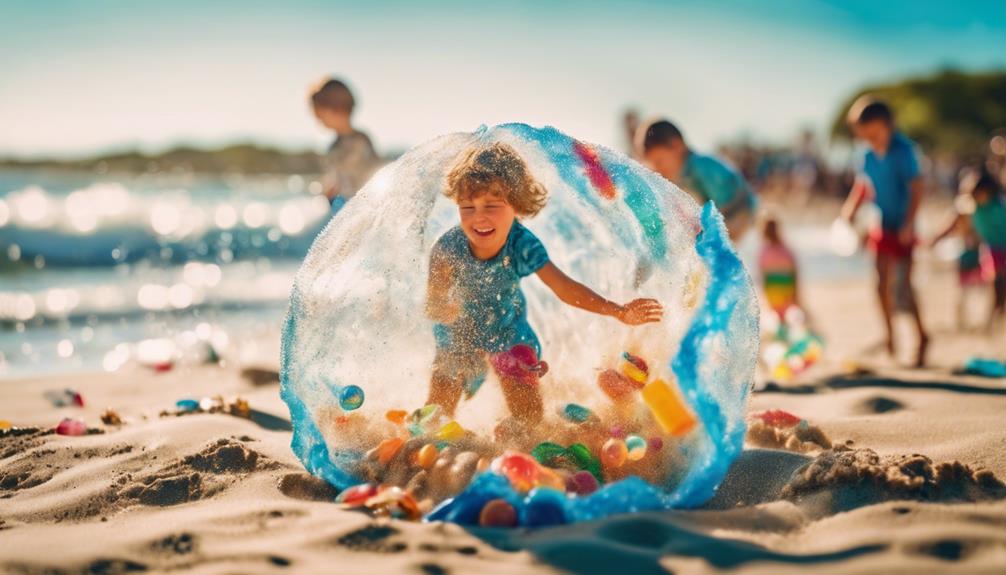To teach kids sun safety at school, focus on simple routines like applying broad-spectrum sunscreen with SPF 30, reapplying it often, and wearing protective clothing such as wide-brimmed hats and UV-blocking sunglasses. Encourage children to check the daily weather and choose appropriate gear for outdoor activities. Reinforcing these habits during outdoor times helps them stay safe and develop lifelong awareness. Keep exploring to find effective strategies that make sun safety fun and easy for kids.
Key Takeaways
- Incorporate sun safety lessons into health or science curricula to educate students on UV risks and protective habits.
- Encourage students to wear wide-brimmed hats, sunglasses, and protective clothing during outdoor activities.
- Promote consistent sunscreen use with reminders to reapply every two hours, especially during outdoor recess or sports.
- Schedule outdoor activities during peak sun hours or provide shaded areas to reduce UV exposure.
- Engage students in fun, interactive activities that reinforce lifelong sun safety habits and awareness.

As the sun shines brighter during warmer months, teaching kids about sun safety becomes essential to protect their skin and health. When kids are outdoors for recess, sports, or walking between classes, they’re exposed to harmful UV rays, which can cause sunburns and long-term skin damage. As someone guiding them, you can help instill good habits early by emphasizing the importance of sunscreen application and wearing protective clothing. Make it clear that applying a broad-spectrum sunscreen with at least SPF 30 should be part of their daily routine, especially before heading outside. Encourage them to apply it generously to all exposed skin—nose, ears, neck, and tops of their feet—and remind them to reapply every two hours or immediately after sweating or swimming. Using sunscreen isn’t just about one-time application; it’s about making it a consistent habit, so they understand that protecting their skin is a priority, not an afterthought.
In addition to sunscreen, protective clothing is a simple yet effective way to shield children from UV exposure. Clothing acts as a physical barrier, reducing the amount of harmful rays reaching the skin. Teach kids to wear wide-brimmed hats that shade their face, neck, and ears, and sunglasses that block UV rays to protect their eyes. Light-colored, tightly woven fabrics work best because they reflect sunlight while still allowing air to circulate, keeping kids comfortable without sacrificing protection. You can make this fun by letting them choose their favorite hats or shirts with fun patterns—this encourages them to see sun safety as a normal and enjoyable part of their outdoor activities. Emphasize that protective clothing doesn’t replace sunscreen but complements it, offering an extra layer of defense. Incorporating Glycolic Acid in skincare routines can also improve skin resilience and help with skin repair, supporting long-term sun protection efforts.
Creating a routine around these habits is key. Before outdoor activities, remind kids to put on their hats and sunglasses and to apply sunscreen thoroughly. After a few days, it will become second nature for them to check the weather and decide whether they need extra sun protection. Reinforce that the goal isn’t just to avoid sunburns today but to protect their skin for a lifetime. As they grow older, understanding these habits will help prevent serious skin issues like melanoma later in life. When you teach kids about sun safety at school, you’re giving them the tools to enjoy outdoor activities responsibly while safeguarding their health. By focusing on sunscreen application and protective clothing, you empower them to take control of their well-being, making sun safety a natural part of their daily routine.
Frequently Asked Questions
How Can Teachers Encourage Consistent Sun Safety Habits?
You can encourage consistent sun safety habits by enforcing sun safety policies and incorporating outdoor shade strategies. Remind kids to wear hats, sunscreen, and sunglasses daily, setting a good example yourself. Schedule outdoor activities in shaded areas when possible and create fun, engaging lessons about sun protection. Reinforcing these practices regularly helps kids develop habits that protect their skin, making sun safety a natural part of their routine.
Are There Specific Sun Safety Guidelines for Outdoor Sports?
A stitch in time saves nine, and the same applies to outdoor sports sun safety. You should guarantee players wear protective clothing, like hats and UV-protective shirts, and apply sunscreen regularly—especially before playing and after sweating. Encourage kids to seek shade during breaks and hydrate often. By establishing these guidelines, you help kids stay safe and enjoy outdoor activities while minimizing sun damage.
How Can Schools Involve Parents in Sun Safety Education?
You can involve parents in sun safety education by encouraging parental involvement through informational meetings and distributing educational materials. Organize community outreach events to promote awareness and share tips on protecting kids from UV rays. By actively engaging parents and the community, you help reinforce sun safety habits at home and school, creating an all-encompassing approach that keeps children protected during outdoor activities.
What Are Signs of Sunburn or Heat Exhaustion in Children?
You should watch for sunburn symptoms like red, tender skin, pain, and blistering. Keep an eye out for heat exhaustion signs such as heavy sweating, weakness, dizziness, nausea, and cold, clammy skin. If your child shows these symptoms, move them to a cool place, offer water, and seek medical help if symptoms worsen. Prompt action helps prevent serious health issues related to sunburn and heat exhaustion.
How to Address Sun Safety in Winter or Cloudy Days?
Did you know UV rays can reach up to 80% on cloudy days? You should always encourage kids to wear winter sunscreen and protective clothing, even when it’s cold or cloudy. Remind them that sun damage happens year-round, so applying sunscreen and seeking shade are essential, regardless of the weather. By keeping sun safety top of mind, you help protect their skin from hidden UV exposure during winter months.
Conclusion
By teaching kids about sun safety, you’re planting seeds that will grow into lifelong habits, like shields against the blazing sun. Imagine them as little warriors, armed with hats, sunscreen, and awareness, standing strong under the bright sky. When you guide them now, you’re lighting a path that keeps their skin safe and bright in every sunny adventure ahead. Together, you’re not just teaching—you’re sculpting confident, sun-smart kids ready to embrace each sunny day.








